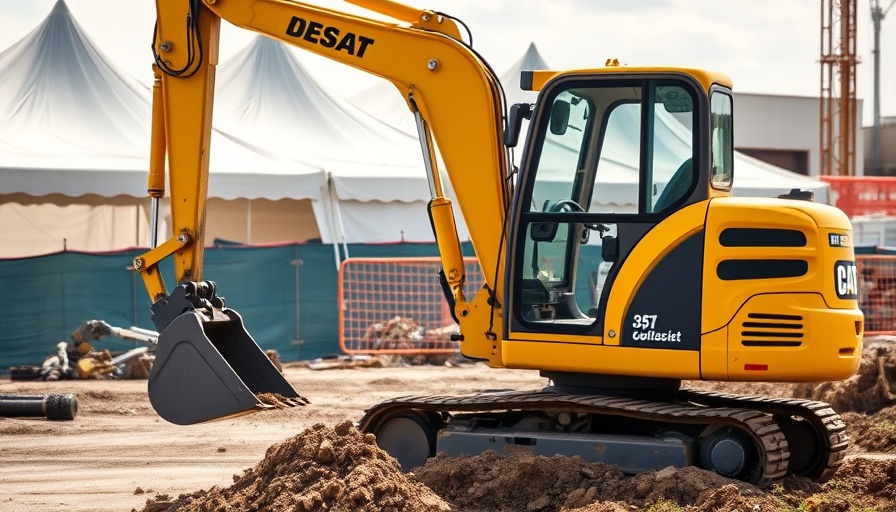
The Future of Mini Excavation: John Deere's Exciting Innovations
John Deere has taken a significant step forward in the construction and landscaping sectors with its launch of two upgraded mini excavators: the 17 P-Tier and 26 P-Tier. Unveiled at the 2025 Utility Expo, these machines promise to enhance performance with their redesigned features, faster cycle times, improved digging power, and enhanced attachment compatibility. These upgrades are not just about power; they represent a response to the evolving needs of contractors who seek versatility and efficiency on job sites.
Key Features Boosting Functionality
Both the 17 P-Tier (1.7 tons) and 26 P-Tier (2.7 tons) were developed through collaboration between John Deere and Wacker Neuson, ensuring that they are built to exacting standards. The new generation of excavators includes a host of features designed for enhanced productivity. Operators can take advantage of a new fixed pin mechanical coupler that facilitates quicker attachment changes, allowing for a more streamlined workflow during tasks. This flexibility is crucial in environments where time is of the essence and adaptability to different tools is needed.
Auxiliary Power: Designed for More
Both the 17 P-Tier and 26 P-Tier come equipped with auxiliary hydraulic lines, with an optional dual hydraulic system available for even more versatility. The 26 P-Tier includes a diverter valve, specifically catering to attachments such as augers and compactors. Justin Steger, the product marketing manager at John Deere, emphasizes that these enhancements are aimed at maximizing breakout force while simultaneously speeding up the hydraulic response. This not only keeps operators productive but also enhances the overall handling of the machines.
Comfort Meets Productivity: An Upgraded Operator Experience
The operator's cab in the 26 P-Tier has been completely redesigned for superior comfort. Featuring standard heating and air conditioning, a Bluetooth radio, and LED lighting, operators will find that the new ergonomically designed space improves visibility with “virtually unrestricted sightlines.” Further innovations include adjustable arm rests on the mechanical suspension seat and large entryways, all aimed at not just enhancing comfort but also focusing on safety with optional add-ons like mirrors and a fire extinguisher bracket.
Maintaining Excellence: Innovative Maintenance Features
Maintenance is a critical aspect of machine operation, and John Deere has added features that simplify this task. Both models come with an easy-access battery disconnect and a sealed in-cab switch module. Notably, a built-in 500-hour maintenance tracker alerts operators when the machine approaches its service interval, a feature that aims to enhance uptime and operational efficiency. The JDLink telematics system further enhances this with real-time data about machine health and location, providing fleet managers with essential insights.
Warranty and Support: Investing in Reliability
Investors in the 17 P-Tier and 26 P-Tier can expect peace of mind with a two-year, 2000-hour standard warranty, with options for extended coverage available. This assurance is vital for contractors who rely on these machines for day-to-day operations and are seeking durability and reliability. According to recent industry analysis, such warranties are an increasingly vital consideration for customers, who demand transparency and support from manufacturers.
Conclusion: A Step Towards the Future
The redesigned 17 P-Tier and 26 P-Tier mini excavators embody John Deere's commitment to meeting market demands with innovative solutions. With their array of upgraded features and an eye on productivity and operator comfort, these excavators will not only serve current needs but are positioned to adapt to future challenges in construction and landscaping. For contractors evaluating their tools for upcoming projects, it's worth considering how these advancements can elevate their operations.
For contractors eager to explore how these innovations can enhance their work, visiting a local John Deere dealer or scheduling a machine demonstration would be prudent. Engaging with the latest technology not only boosts productivity but also positions businesses for growth in an increasingly competitive market.
 Add Row
Add Row  Add
Add 




Write A Comment